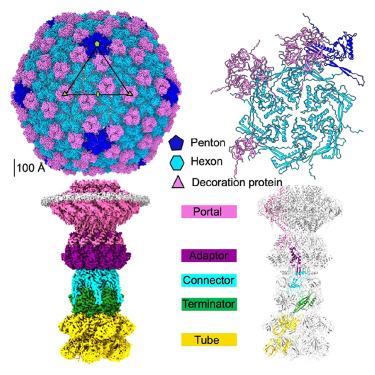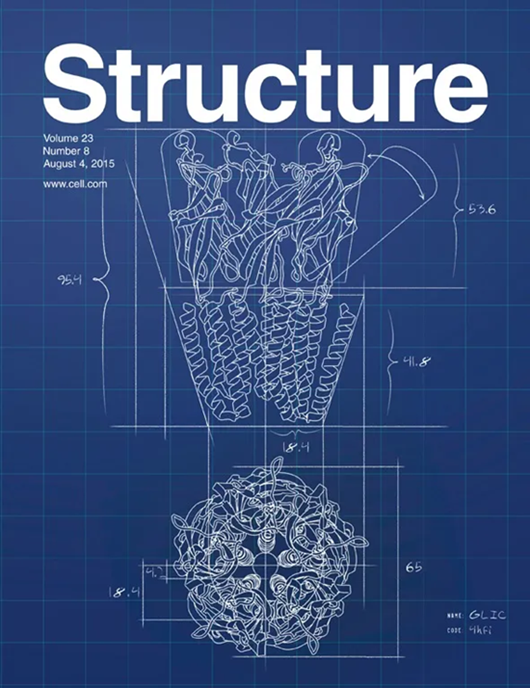Structures of a T1-like siphophage reveal capsid stabilization mechanisms and high structural similarities with a myophage
IF 4.4
2区 生物学
Q2 BIOCHEMISTRY & MOLECULAR BIOLOGY
引用次数: 0
Abstract
Bacteriophage T1, a member of Siphoviruses, infects Escherichia coli with high efficiency, making it a promising candidate for phage therapy. Here, we report the near-atomic structures of FCWL1, a T1-like phage that belongs to the T1 phage family. We focus on the head, the head-to-tail interface, and its surrounding components. The hexameric capsomer displays unique gaps between neighboring A domains of the major capsid proteins. These gaps are partially filled by the N-loop of the decoration protein, which adopts a unique conformation. These structural features suggest that the phage might employ a novel strategy for stabilizing its head. Furthermore, despite being a siphophage, the head and head-to-tail connector of the phage show high structural similarity to those of a myophage. These findings enhance our understanding of the structure, capsid stabilization mechanism, and evolution of phages in the T1 family.

求助全文
约1分钟内获得全文
求助全文
来源期刊

Structure
生物-生化与分子生物学
CiteScore
8.90
自引率
1.80%
发文量
155
审稿时长
3-8 weeks
期刊介绍:
Structure aims to publish papers of exceptional interest in the field of structural biology. The journal strives to be essential reading for structural biologists, as well as biologists and biochemists that are interested in macromolecular structure and function. Structure strongly encourages the submission of manuscripts that present structural and molecular insights into biological function and mechanism. Other reports that address fundamental questions in structural biology, such as structure-based examinations of protein evolution, folding, and/or design, will also be considered. We will consider the application of any method, experimental or computational, at high or low resolution, to conduct structural investigations, as long as the method is appropriate for the biological, functional, and mechanistic question(s) being addressed. Likewise, reports describing single-molecule analysis of biological mechanisms are welcome.
In general, the editors encourage submission of experimental structural studies that are enriched by an analysis of structure-activity relationships and will not consider studies that solely report structural information unless the structure or analysis is of exceptional and broad interest. Studies reporting only homology models, de novo models, or molecular dynamics simulations are also discouraged unless the models are informed by or validated by novel experimental data; rationalization of a large body of existing experimental evidence and making testable predictions based on a model or simulation is often not considered sufficient.
 求助内容:
求助内容: 应助结果提醒方式:
应助结果提醒方式:


